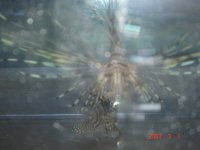Well it had to happen.... I just received a Lion fish from Haiti in my regular order. My shipper told me to look in box #45 for a new fish. When we opened it you could have knocked me down with a feather.
I informed him that it was poisonous. He wondered how the packers managed to pack it without getting stung. I will post photos of it soon. I just cant see how it got to Haiti . Given the lack of Aquariums in Haiti (none to my knowledge) I don't think it was let lose.
Bob
I informed him that it was poisonous. He wondered how the packers managed to pack it without getting stung. I will post photos of it soon. I just cant see how it got to Haiti . Given the lack of Aquariums in Haiti (none to my knowledge) I don't think it was let lose.
Bob






